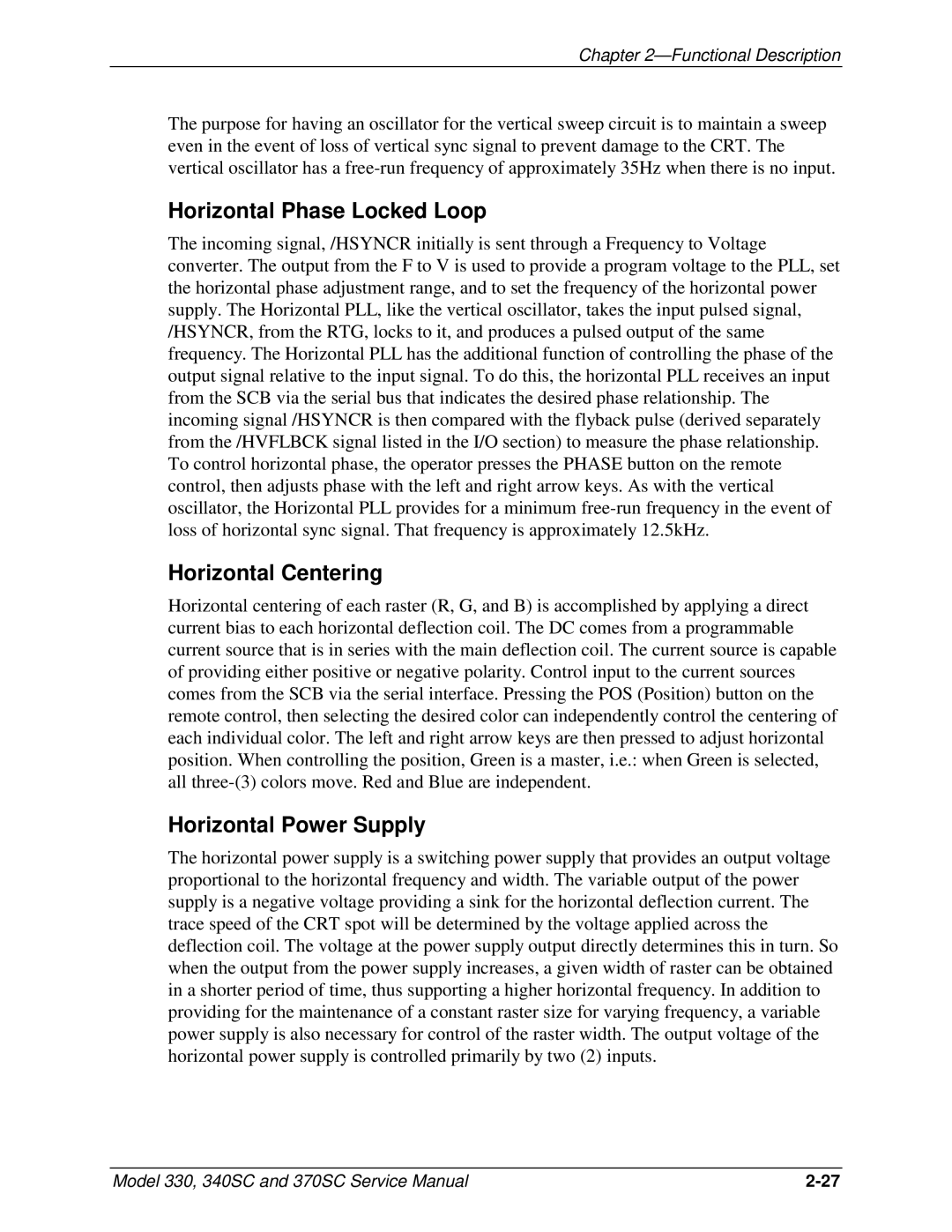
Chapter
The purpose for having an oscillator for the vertical sweep circuit is to maintain a sweep even in the event of loss of vertical sync signal to prevent damage to the CRT. The vertical oscillator has a
Horizontal Phase Locked Loop
The incoming signal, /HSYNCR initially is sent through a Frequency to Voltage converter. The output from the F to V is used to provide a program voltage to the PLL, set the horizontal phase adjustment range, and to set the frequency of the horizontal power supply. The Horizontal PLL, like the vertical oscillator, takes the input pulsed signal, /HSYNCR, from the RTG, locks to it, and produces a pulsed output of the same frequency. The Horizontal PLL has the additional function of controlling the phase of the output signal relative to the input signal. To do this, the horizontal PLL receives an input from the SCB via the serial bus that indicates the desired phase relationship. The incoming signal /HSYNCR is then compared with the flyback pulse (derived separately from the /HVFLBCK signal listed in the I/O section) to measure the phase relationship. To control horizontal phase, the operator presses the PHASE button on the remote control, then adjusts phase with the left and right arrow keys. As with the vertical oscillator, the Horizontal PLL provides for a minimum
Horizontal Centering
Horizontal centering of each raster (R, G, and B) is accomplished by applying a direct current bias to each horizontal deflection coil. The DC comes from a programmable current source that is in series with the main deflection coil. The current source is capable of providing either positive or negative polarity. Control input to the current sources comes from the SCB via the serial interface. Pressing the POS (Position) button on the remote control, then selecting the desired color can independently control the centering of each individual color. The left and right arrow keys are then pressed to adjust horizontal position. When controlling the position, Green is a master, i.e.: when Green is selected, all
Horizontal Power Supply
The horizontal power supply is a switching power supply that provides an output voltage proportional to the horizontal frequency and width. The variable output of the power supply is a negative voltage providing a sink for the horizontal deflection current. The trace speed of the CRT spot will be determined by the voltage applied across the deflection coil. The voltage at the power supply output directly determines this in turn. So when the output from the power supply increases, a given width of raster can be obtained in a shorter period of time, thus supporting a higher horizontal frequency. In addition to providing for the maintenance of a constant raster size for varying frequency, a variable power supply is also necessary for control of the raster width. The output voltage of the horizontal power supply is controlled primarily by two (2) inputs.
Model 330, 340SC and 370SC Service Manual |
